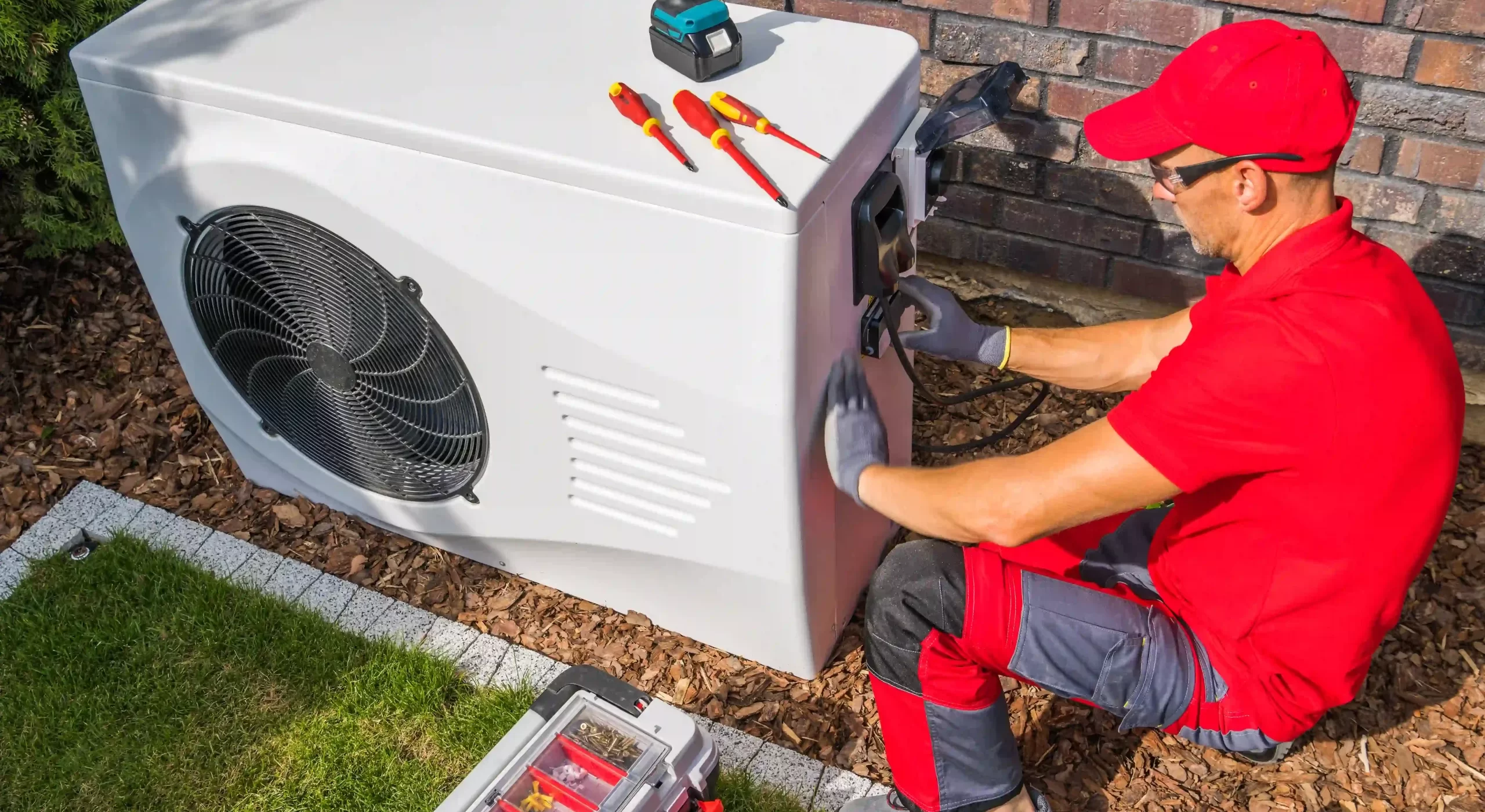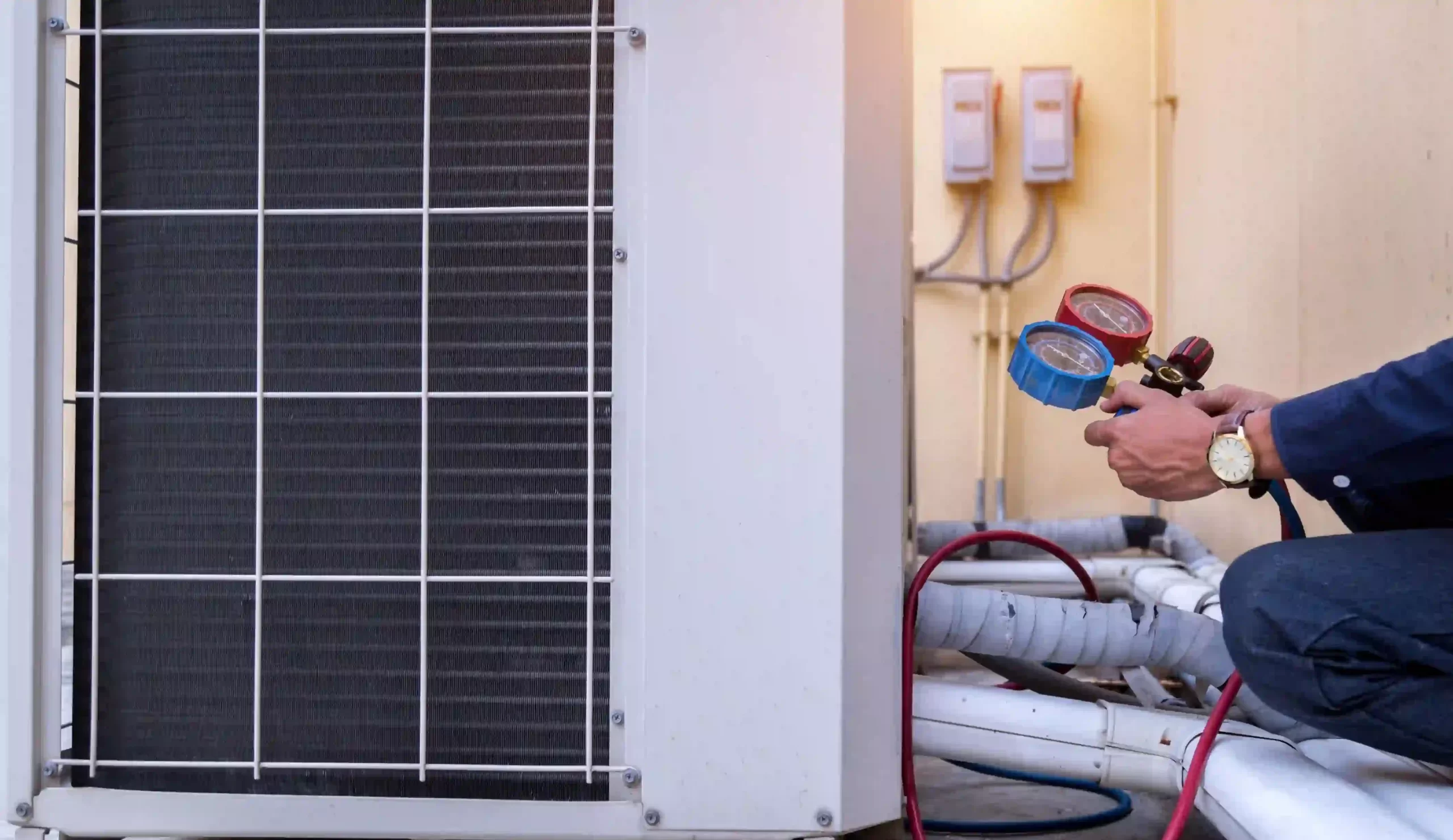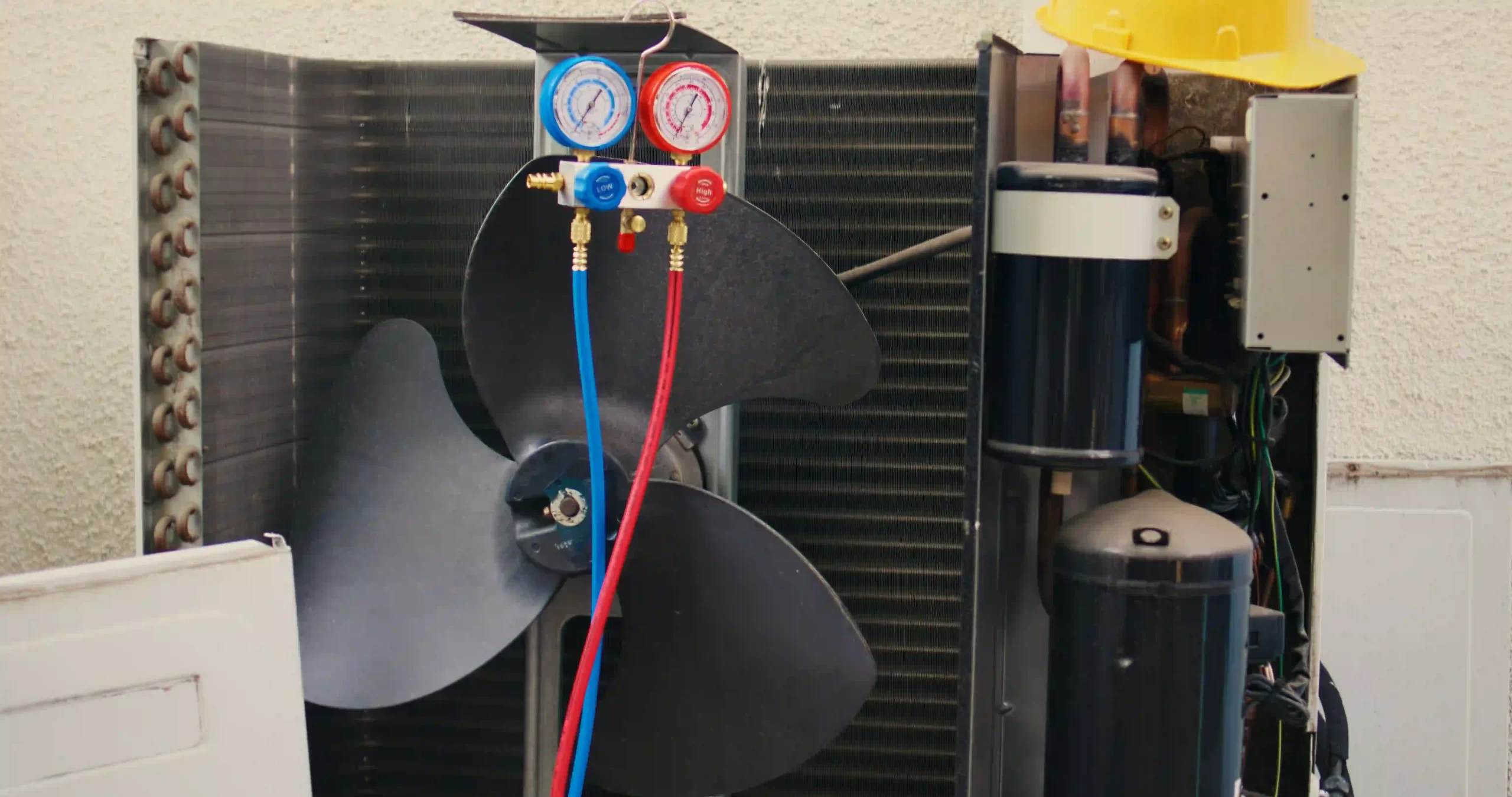Common Heat Pump Problems and How to Fix Them
Understanding Heat Pumps
Heat pumps are a smart, energy-efficient solution for both heating and cooling your home. Unlike traditional HVAC systems, they work by transferring heat rather than generating it, making them a cost-effective and eco-friendly option. Whether you’re looking to stay warm in winter or cool in summer, a well-maintained heat pump ensures year-round comfort.


How Do Heat Pumps Work?
Why Regular Maintenance Matters
Routine maintenance is essential for keeping your heat pump running efficiently. Dust buildup, refrigerant leaks, and clogged filters can reduce performance and increase energy costs. Regular servicing ensures optimal operation, extends the unit’s lifespan, and prevents costly repairs. Simple tasks like cleaning filters and checking refrigerant levels can significantly enhance efficiency and indoor comfort.

Most Common Heat Pump Issues & Troubleshooting
Heat Pump Running Constantly
If your heat pump never shuts off, it could be a sign of inefficiency. A constantly running unit not only wastes energy but also increases wear and tear on the system.
Why It Happens
One of the most common reasons is a dirty air filter, which restricts airflow and forces the system to work harder. Incorrect thermostat settings may also prevent the heat pump from reaching the desired temperature. Additionally, low refrigerant levels can reduce the system's ability to transfer heat effectively. If the heat pump is undersized for the home, it will struggle to meet heating and cooling demands, leading to continuous operation.
How to Fix It:
To resolve this issue, start by replacing the air filter regularly—at least once a month. Check the thermostat settings and adjust the program schedule to maintain an efficient temperature. If refrigerant levels are at low, call a professional to the inspect and refill them as needed. In cases where the heat pump is too small for the space, upgrading to a properly sized unit may be the best long-term solution.
Heat Pump Won’t Turn On
A heat pump that fails to start can leave you without heating or cooling, making it crucial to diagnose the issue quickly.
Why It Happens
One of the most common reasons is a tripped circuit breaker, which cuts power to the system. A faulty capacitor or contactor can also prevent the heat pump from starting. Also loose electrical connections may cause intermittent power loss, while a defective thermostat may fail to send signals to the heat pump.
How to Fix It:
Start by resetting the breaker and checking power supply switches to ensure the unit is receiving electricity. Inspect the thermostat settings and replace the battery if needed. If the issue persists, contact an HVAC technician to inspect electrical components and fix any wiring issues.
Heat Pump Blowing Cold Air in Heat Mode
If your heat pump is set to heat mode but still blows cold air, there may be an issue affecting its heating efficiency.
Why It Happens
A refrigerant leak can reduce the system’s ability to generate heat. A faulty reversing valve may be stuck in cooling mode, preventing the heat pump from switching to heat mode. If the system has entered a defrost cycle, it may temporarily blow cold air. Additionally, incorrect thermostat settings may cause the fan to run while the heat function is off.
How to Fix It:
First, ensure that the thermostat is correctly set to heat mode and at the desired temperature. If the air is only slightly warm, wait a few minutes—your system may be in defrost mode, which is normal. If cold air persists, call a technician to check for refrigerant leaks or a malfunctioning reversing valve.
Heat Pump Making Strange Noises
If your heat pump is making unusual sounds, it may indicate mechanical or electrical issues that need immediate attention.
What Different Noises Mean:
- A rattling or clanking noise suggests loose internal components such as fan blades or screws.
- A hissing or bubbling sound usually points to a refrigerant leak.
- Buzzing or clicking noises could indicate an electrical issue, such as a failing capacitor, relay, or wiring problem.
- A whining or whirring sound may be due to a worn-out motor or a failing compressor.
How to Fix It:
If you hear rattling, check for any loose screws or components and tighten them if safe to do so. If the problem persists, call an HVAC professional to inspect internal parts. Electrical issues, refrigerant leaks, or motor failures require professional repair, so do not attempt to fix them yourself.
Ice Buildup on Outdoor Unit
Ice buildup on the outdoor unit can reduce your heat pump’s efficiency and, if left unchecked, cause long-term damage.
Why It Happens:
- A malfunctioning defrost cycle prevents the system from melting accumulated ice.
- Blocked airflow due to snow, leaves, or dirt can cause freezing.
- Low refrigerant levels may result in coil freezing.
How to Fix It:
Start by clearing any debris or snow around the unit to improve airflow. Check if the defrost cycle is activating as expected. If ice continues to build up, schedule a professional inspection to check for refrigerant leaks or faulty sensors.
What Different Noises Mean:
- A malfunctioning defrost cycle prevents the system from melting accumulated ice.
- Blocked airflow due to snow, leaves, or dirt can cause freezing.
- Low refrigerant levels may result in coil freezing.
How to Fix It:
Start by clearing any debris or snow around the unit to improve airflow. Check if the defrost cycle is activating as expected. If ice continues to build up, schedule a professional inspection to check for refrigerant leaks or faulty sensors.
DIY Fixes vs. When to Call a Professional
Some heat pump issues have simple solutions that homeowners can handle, while others require expert intervention.
- Dirty air filters should be replaced monthly
- If the circuit breaker trips, reset it and monitor for further issues. If it keeps tripping, an electrician should inspect the system.
- Thermostat issues can often be fixed by checking the settings and replacing batteries. However, if wiring or calibration is the problem, a technician is needed.
- Refrigerant leaks always require a certified technician, as handling refrigerants improperly can be dangerous.
- For loud noises, tightening screws may help if the sound is due to loose components. However, buzzing, clicking, or high-pitched noises could indicate compressor or motor problems, which need professional repair.
- If ice buildup occurs, clearing debris and checking the defrost cycle can help. If ice persists, calling a technician is the best course of action.
Routine maintenance can prevent many of these problems, ensuring your heat pump operates smoothly year-round.
When to Repair vs. Replace Your Heat Pump
Deciding whether to repair or replace your heat pump depends on its age, efficiency, and overall condition. While minor issues can often be fixed, there comes a point where replacement is the better long-term investment.
Consider replacing if:
- Your heat pump is over 10-15 years old, as older systems lose efficiency and require frequent repairs.
- Repair costs exceed 50% of the price of a new system—spending too much on an aging unit may not be cost-effective.
- Energy bills keep rising despite regular maintenance, signaling declining efficiency.
- You experience frequent breakdowns, which indicate that the system is reaching the end of its lifespan.
Choosing a Professional Heat Pump Technician
Hiring the right HVAC Service in San Diego ensures that your heat pump is repaired or installed correctly, maximizing efficiency and lifespan. Not all technicians have the same level of expertise, so it’s important to choose wisely.
What to Look for in a Technician:
- Certifications → Look for professionals who are NATE-certified (North American Technician Excellence) and EPA-licensed, as they meet industry standards for quality and safety.
- Experience → A technician with a proven track record in Heating Service is more likely to diagnose and fix issues correctly.
- Customer reviews → Check ratings and testimonials from previous clients to gauge reliability and professionalism.
- Warranty → A good technician or company should offer guarantees on labor and parts, ensuring you receive quality service and protection against future issues.
By selecting a certified and experienced professional, you can be confident that your heat pump will be handled properly, preventing unnecessary repairs and ensuring optimal performance.
